#Leucophaeus
Text
BOTD: Laughing Gull

Photo: Andrew Cannizzaro
"The strident laughing calls of this well-named gull are among the most characteristic sounds around tidewater along the Atlantic and Gulf coasts, especially in summer. It seems to be mostly a warm-weather bird, with the majority departing from Atlantic coastal areas north of Florida in winter. Its nesting colonies are localized but often large, sometimes with thousands of nests."
- Audubon Field Guide
#birds#laughing gull#birds of north america#north american birds#gulls#seabirds#seagulls#birds of the us#birds of canada#birds of mexico#birds of central america#birds of the caribbean#bird watching#birdblr#birblr#bird of the day#Leucophaeus atricilla
35 notes
·
View notes
Text
BOTD: Laughing Gull

Image credit: Ianare
Laughing Gull (Leucophaeus atricilla)
The Laughing Gull's name comes from its raucous call, which sounds like a high-pitched "ha...ha...ha...". The specific name 'atricilla' comes from Latin 'atra' meaning black, unlucky, or malevolent, and 'cilla' meaning tail. Carl Linnaeus, who coined the species' scientific name in 1758, may have actually intended to write 'atricapilla', meaning black-haired, which would have been more accurate to the bird's appearance.
#seagulls#sea gulls#seagull#sea gull#gulls#gull#sea birds#seabirds#coastal birds#tropical birds#coastal wildlife#birds of america#birds of north america#birds of south america#birding#birdwatching#bird of the day#laughing gull#leucophaeus atricilla#birdoftheday#bird#birds
322 notes
·
View notes
Photo

Ashy Drongo (Dicrurus leucophaeus)
© Rodolfo Quinio
93 notes
·
View notes
Photo

Ashy Drongo (Dicrurus leucophaeus)
© Ralf Weinand
35 notes
·
View notes
Photo

Ashy Drongo (Dicrurus leucophaeus)
© Ralf Weinand
41 notes
·
View notes
Photo
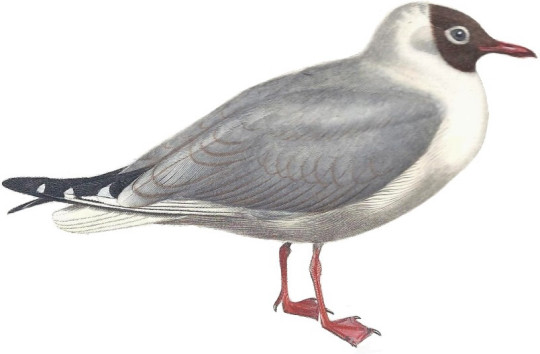
A new variant has been added!
Laughing Gull (Leucophaeus atricilla)
© Edouard Traviès
It hatches from black, central, coastal, common, compact, dark, deep, long, neat, northern, red, slender, small, and white eggs.
squawkoverflow - the ultimate bird collecting game
🥚 hatch ❤️ collect 🤝 connect
5 notes
·
View notes
Text
Un biólogo lanza una recaudación de fondos colectiva para investigar a los Mandrilus leucophaeus en Guinea Ecuatorial
Un biólogo lanza una recaudación de fondos colectiva para investigar a los Mandrilus leucophaeus en Guinea Ecuatorial
El biólogo ambiental Oriol Colomo ha puesto en marcha una campaña de recaudación de fondos colectiva ‘crowdfunging’ en colaboración con la plataforma GoFundMe para investigar la especie ‘Mandrilus leucophaeus’, conocida como primate dril en Guinea Ecuatorial, concretamente en el Pico Basilé, donde la especie es limitada y está en peligro de extinción.
El ‘Mandrilus leucophaeus’, más conocido por…

View On WordPress
0 notes
Note
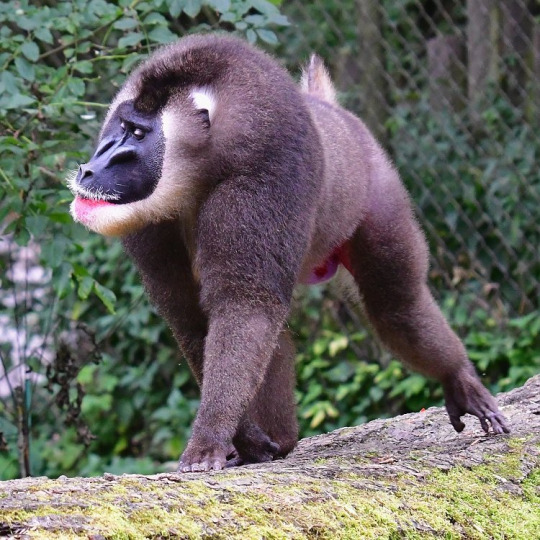
Hi there! What kind of fellow is this? Thanks. <3
Hello! This is a drill (Mandrillus leucophaeus)! They’re not as well-known as their red and blue faced cousins, the mandrills (Mandrillus sphinx)…

But drills are pretty colorful monkeys in their own right. And by that I mean that male drills have butts that would put an unicorn to shame!
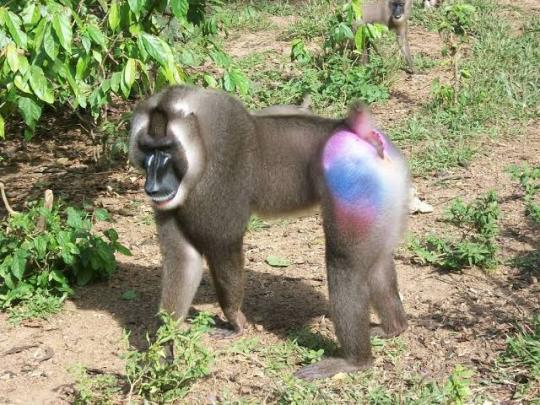

542 notes
·
View notes
Text

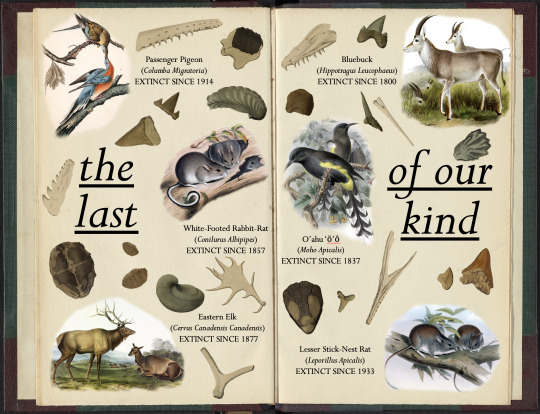
An Account of the First Aërial Voyage in England – Vincent Lunardi // A Pictorial Atlas of Fossil Remains – Gideon Algernon Mantell, James Parkinson, Edmund Tyrell Artis // Potorous Platyops – John Gould // Thylacinus Cynocephalus, Juvenile – Joseph Wolf // Choeropus Castanotis – John Gould // Hippotragus Leucophaeus – Joseph Smit, Joseph Wolf // Hapalotis Albipipes – John Gould // Pyrenean Ibex – Richard Lydekker, Joseph Wolf // Eastern Elk – John James Audubon // Royigerygone Insularis – Gregory Macalister Matthews, Henrik Grönvold // Sceloglaux Albifacies – John Gerrard Keulemans // Leporillus Apicalis – John Gould // Columba Migratoria – John James Audubon, J. T. Bowen // Moho Apicalis – John Gerrard Keulmans // ...Familiar Place – Lucy Dacus
for @artists-ache 💙🌹 📖
#okay so this is pretty different from my usual style#so if you don't like it just let me know and i'm happy to make a new/different edit with the same lyrics!#i was aiming for sort of a natural history/field notes type look#but idk if i achieved it 😅#natural history#extinction#extinct animals#extinct species#recently extinct#extinct birds#fossils#...familiar place#...familiar place lucy dacus#no burden#no burden album#no burden lucy dacus#lucy dacus#rose 🌹📖#request 🥰#art#art history#lyrics#lyric art#tw bones
496 notes
·
View notes
Text

Ashy Drongo (Dicrurus leucophaeus), family Dicruridae, Thailand
photograph by SomchaiKetkool Suea Highway Oxide
183 notes
·
View notes
Text
Animal of the Day!
Bluebuck (Hippotragus leucophaeus)

(Photo in Public Domain)
Extinction Date- 1800
Habitat- Southern Africa
Size (Weight/Length)- 200 kg; 1.6 m
Diet- Grasses
Cool Facts- By the time the bluebuck was scientifically described, it was already on the decline and the Europeans certainly didn’t help. Bluebucks lived in small herds and spent their lives on the move in search of fresh grasses. These antelope are considered the first large African mammal to go extinct in modern times. Changes in environment, such as a rising sea level, and low genetic diversity already put the bluebuck at risk. Europeans then hunted the antelope to extinction for its meat and as museum specimens. Multiple rock paintings depict Bluebuck throughout Africa and were believed to have supernatural potency by Neolithic peoples. Roan and sable antelopes, their closest relatives, still wander Africa today. Sable antelope are critically endangered due to illegal hunting and conservations are rushing to make sure it doesn’t go the way of the bluebuck.
Rating- 13/10 (Only remembered by four taxidermied individuals.)
#animal of the day#animals#mammals#antelope#monday#october 2#bluebuck#biology#science#conservation#the more you know#taxidermy#extinct#extinctober#roan antelope#sable antelope
157 notes
·
View notes
Text
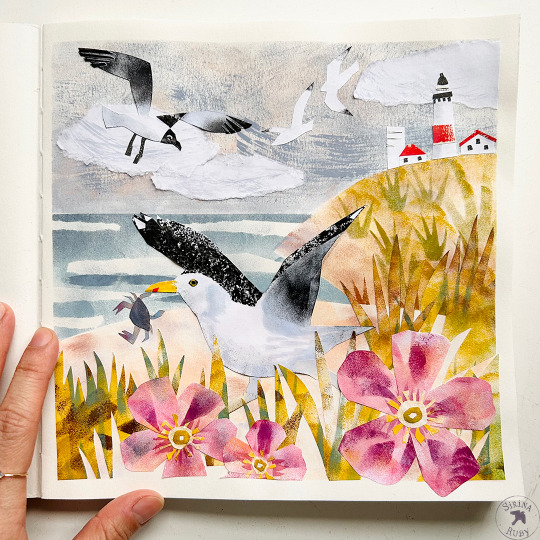
Finished collage! More happy memories from Montauk. A great black-backed gull (Larus marinus), the largest gull in the world, and a common sight on the East Coast. Also pictured, a laughing gull (Leucophaeus atricilla)—a summer visitor to the Northeast, and year-round on the coasts of the Southeast and Gulf of Mexico. And of course, the charming Montauk Lighthouse in the distance!
#my art#sirina ruby#sirin thada#artists on tumblr#collage#seagull#illustrators on tumblr#montauk#coastal art#beachlife
35 notes
·
View notes
Text
Gull in the Wind
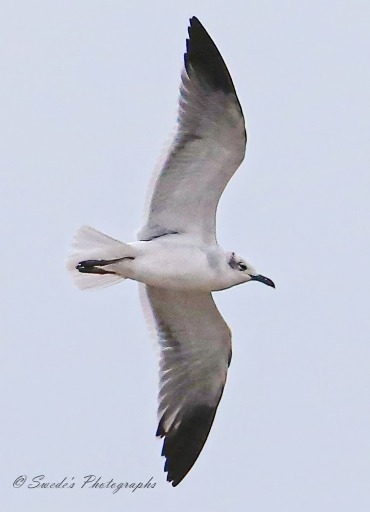
“A laughing gull gracefully rides the currents, wings outstretched against the pale sky.” - Copilot
I saw this laughing gull (Leucophaeus atricilla) at the beach in Gulfport, Mississippi. In this photo I think the gull was probably in a turn, you'll notice that its wings are vertical yet it head stay steady, straight ahead.
You know, the photographs that I post here are not quite a vivid as the same photographs that I post at my pixel's gallery, because here, I reduce the size of the photos and usually make a slight reduction in the quality of the photos to make them easier to load.
Take a look:
https://swede1952-photographs.pixels.com
#photo#photography#photographer#photographylovers#wildlife#nature#birds#birdwatching#birdsphotography#birds of north america#birdlovers#birdphotography#laughing gull#birbs#birding#bird watching#bird photography#birdingphotography#birds nature#bird
24 notes
·
View notes
Text
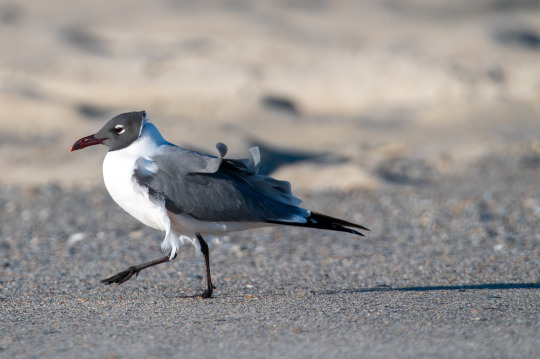
laughing gull | Leucophaeus atricilla
33 notes
·
View notes
Text
Best Gull Poll: FINAL MATCHUP!
It's time for the final showdown! Who will take home the title of Best Gull?
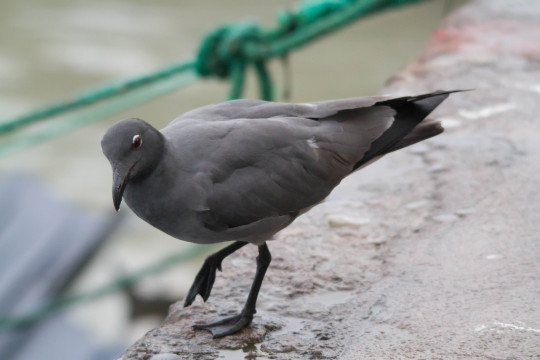

[Image ID: Two pictures of gulls. The left is a lava gull walking along a concrete ledge. The right is a Ross's gull standing among small rocks by the shore. /End ID]
The lava gull (Leucophaeus fuliginosus) is the rarest gull in the world. They are found only on the Galápagos Islands, predominantly the Santa Cruz, Isabela, San Cristobal, and Genovesa islands, with an estimated population of 300-600 individuals. They typically measure 51-55 cm (20-22 in) in length. Unlike other hooded gulls, their sooty brown-to-black head does not vary by season. They have red eyelids and white eye crescents. Their body is dark grey with paler grey underparts, their bill and legs are black, and their wings are dark grey with a white leading edge. On Genovesa they exploit the kleptoparasitic behavior of the magnificent frigatebird, capitalizing on botched attempts by the frigatebirds to steal fish from other seabirds. Unlike most gulls which nest close together, they are solitary nesters. They are listed as vulnerable by the IUCN.
The Ross's gull (Rhodostethia rosea) is a small gull found in the high Arctic of northern North America, northeastern Siberia, and the Bering Sea. They typically measure 29-31 cm (11-12 in) in length and 90-100 cm (35-39 in) in length. They have a white head, black neck ring, white underparts with a pink flush, light grey upperparts and wings, red legs, and small black bill. They have a distinctive wedge-shaped white tail. They feed on small fish, crustaceans, and insects. They also eat biofilm, the mixture of plankton, microbes, and detritus that washes up on beaches and intertidal areas.
lava gull image by budgora
Ross's gull image by Tony Beck
40 notes
·
View notes
Text
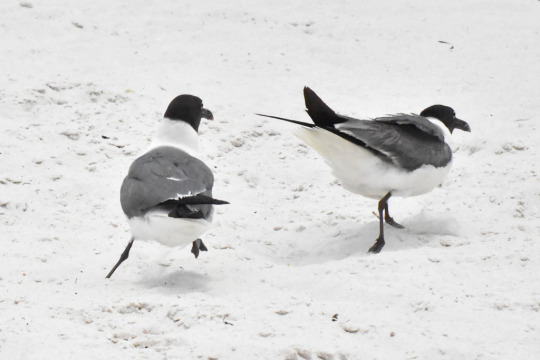
laughing gulls (leucophaeus atricilla) - june 2022
10 notes
·
View notes